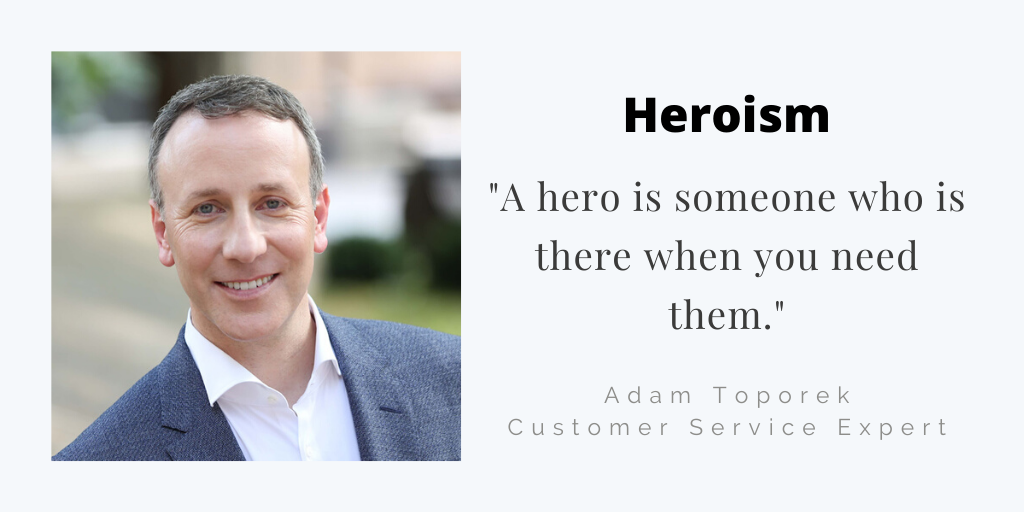"I won't give you that report."
The report tracked the percentage of successful credit card offers made by each sales rep in our contact center. The initiative was created by the marketing department, and a marketing manager controlled access to the report.
This was more than twenty years ago, when large reports were printed and distributed as physical copies. The data you can get with a few clicks today required someone with access to the right computer system back then.
The manager treated me with open disdain when I called and asked to be added to the distribution list. She worked in the great kingdom of marketing, while I was in the lowly call center.
Withholding the report was a power play.
We've all encountered internal roadblocks like this manager. These are coworkers who should be on our side, but appear to steadfastly work against us. It's frustrating and annoying.
There is a solution.
I eventually got my own copy of the report. And I learned how to overcome the internal stigma of working in the call center to successfully partner with other departments. One program added an extra $1 million per year in additional revenue.
The secret is understanding your most important internal customers, and learning how to become indispensable to them.
What is internal customer service?
A customer is anyone you serve, so internal customer service is serving internal customers. This includes several groups of coworkers:
People on your team
Your boss
People in other departments
It can also include other groups such as contractors, vendors, and partners who work closely with us.
The marketing manager didn't view me as an internal customer, so she was dismissive of my request because it didn’t appear to benefit her. But I was a customer—her department was "selling" the report, and I wanted to buy it.
There are a few qualities that make internal service unique:
Frequent interactions
Closer interpersonal relationships (sometimes)
Two-way service
Two-way service occurs when each party serves the other, so you're each other's customer.
My mistake in approaching the marketing manager was not recognizing a two-way service relationship. She was a customer for my services as well, since she was responsible for the credit card project and she could benefit if the acceptance rate improved. But I didn’t consider her needs when I requested the report.
Eventually, I was able to share my progress. She gladly added me to the report distribution once she saw that I was helping her numbers look good.
You can identify your own internal customers with the help of this short training video.
Identifying your most important internal customers
It's great to have positive relationships with all of your internal customers. There are a few individuals or groups where a great relationship is extra important to your success.
For instance, the marketing manager could have been an important ally for my project. We both shared the same goal of increasing the credit card acceptance rate. My job got more difficult when she refused to put me on the distribution list for the report.
I learned from this experience the next time I worked on a project that involved another department. One example was call center agents were asked to upsell slow-moving products, but were having little success.
A merchandising manager and his team were internal customers for this project. I was there customer, too, I needed their help to identify the right sales pitch for our call center agents to make to customers.
Rather than tell the manager what I needed from him, I started this relationship by asking more about what he was trying to achieve. This led to a few insights:
Slow-moving products took up valuable space in the warehouse.
Selling these items freed up cash to invest in better products.
The manager was evaluated based on how well his purchases sold.
Once I understood these needs, I was able to describe how I could help him achieve his goals. This made him a willing partner who was eager to help me get what I needed to our call center agents could improve their sales.
Can you identify your most important customers and their needs?
How do you provide outstanding internal customer service?
The fundamentals of customer service are similar, whether your customers are external or internal.
Build rapport and establish a positive relationship.
Listen carefully to understand your customers' needs.
Take action to help your customer succeed.
This was how I approached my relationship with the merchandising manager and his team. I asked to meet with them to kick off our project, and then I listened carefully to their needs.
The call center agents who were asked to upsell these products were also my customer, since I needed to support their performance. I listened to calls, and met with several agents to understand what worked and what didn't. This helped me understand exactly what they needed to do their jobs well.
All that listening helped us identify several solutions that quickly improved sales. The program generated an additional $1 million in revenue over the course of the first year.
Take Action
You can create great relationships with your own internal customers following this same process:
List your internal customers
Identify your key customers to focus on
Listen to their needs, and take action to help them
This lesson stayed with me throughout my corporate career. Whenever I identified an important internal customer, I took time to understand their needs. It became far easier to get what I wanted when I could demonstrate my commitment to helping them get what they wanted.












